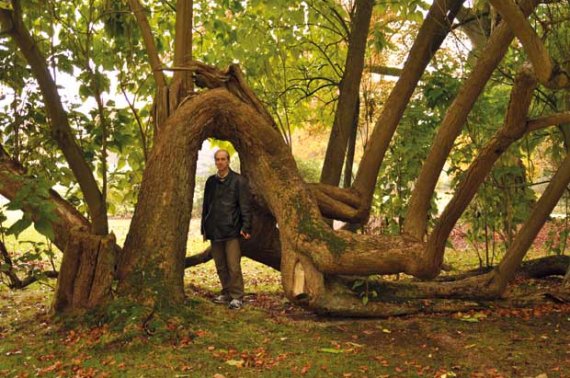Name a tree and Leo Goudzwaard knows it. What is more, he has seen it, measured it, mapped it and taken its photo. The result of four years spent travelling and recording is now available in book form: Deciduous trees in the Netherlands and Flanders. A substantial work numbering 432 pages with more than 1500 photos and descriptions of over 250 species and hybrids for professionals and amateurs.
Why was this book necessary?
‘I wanted to produce a book with trees that are hardy and grow well in the Netherlands and Flanders. An accessible, informative book with lots of photos. There was no such book before. The existing books are translations from English.’
In addition to technical info, sections on recognizing trees, where they grow and their uses, you also give a lot of attention to their localities. Should we go and find them?
‘Yes, I think that’s important. That’s what I did. I went and looked for myself everywhere, all the observations and measurements are my own and not copied. The book should get people enthusiastic. Take a look before you choose which tree. My motto is look first, then use it.’
You make a case for more diversity in the trees planted. Don’t we have enough species?
‘There are 268 in this book; large-scale greenery projects only include 20 to 30 species. Most greenery managers only know a few species or don’t know what other species do, what they can expect. So you see more and more ash trees and oak trees in rural areas and plane trees and linden trees in towns.’
Lots of deciduous trees are exotics. Does that matter?
‘No. Exotics are only a problem if they crowd out other species. But most exotics behave admirably. I do make a distinction between towns and rural areas. In towns you can’t avoid using exotics. Urban conditions are very different: the ground is drier and poor in nutrients. And in towns you want trees that stand out in terms of their colour or flowering behaviour. But I do think you need trees native to the area in the countryside.’
In the photo you are standing next to a cigar tree (Catalpa bignonioides) in the Soestdijk Palace park. Why this photo?
‘Queen Juliana loved trees. When this tree broke in a storm, she insisted that it should not be removed. A cracked tree will often recover. That was her opinion and I agree. Thanks to her we still have this unusual tree today.’

